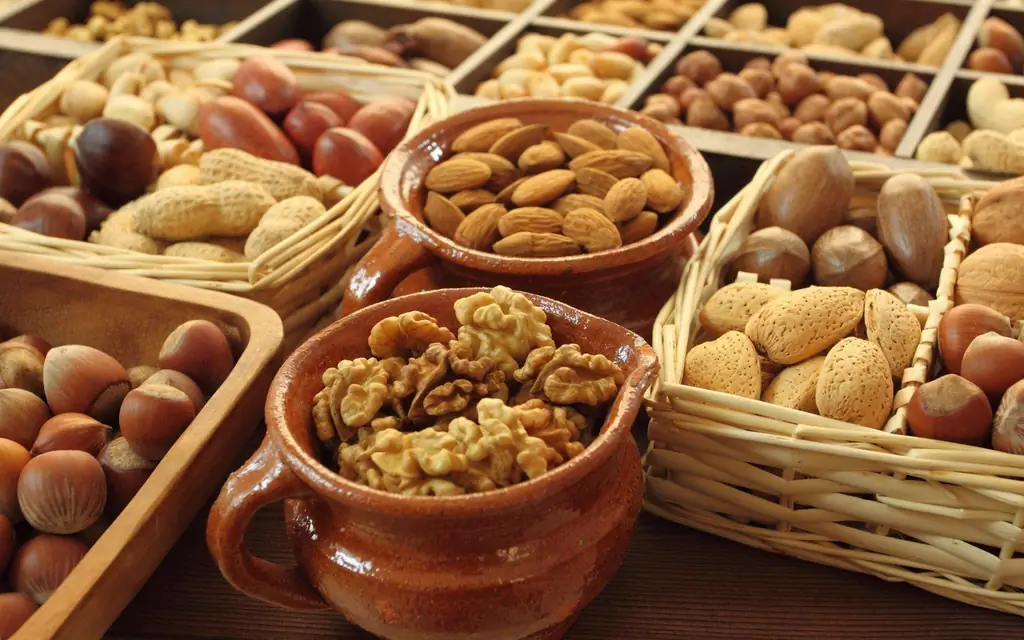
Table of contents:
- How to clean and store different types of nuts at home
- General features of cleaning and storing nuts
- How to store unpeeled nuts
- How are peeled fruits stored?
- General rules of storage at home
- How to peel nuts from shells and husks
- How to peel coconut
- How peanuts, almonds and pine nuts are peeled, including from the husk
- Author Bailey Albertson [email protected].
- Public 2024-01-17 22:26.
- Last modified 2025-06-01 07:32.
How to clean and store different types of nuts at home
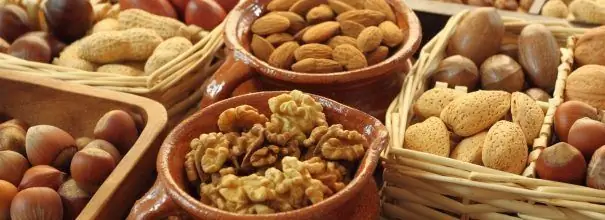
Nuts are among the healthiest foods. They are nutritious, high in calories, contain many useful trace elements and vitamins. Nuts are eaten as an independent dish or used as ingredients for main dishes, salads and all kinds of baked goods. The taste and health benefits of nuts depend primarily on quality and freshness. But even good fruits lose their properties if stored incorrectly at home.
Content
-
1 General features of cleaning and storing nuts
1.1 Photo gallery: types of nuts
-
2 How to store unpeeled nuts
2.1 Table: storage conditions for inshell nuts
-
3 How peeled fruits are stored
- 3.1 Table: Shelf life of nuts without shell
- 3.2 Nuts that do not require peeling
- 3.3 How to store crushed and grated nuts
- 4 General rules for storage at home
-
5 How to peel nuts from shells and husks
-
5.1 Hazelnuts and hazelnuts
5.1.1 Video: how to make a device for cleaning hazelnuts and hazelnut with your own hands
-
5.2 Pistachios
5.2.1 Video: how easy it is to peel pistachios
- 5.3 Brazil nuts
-
5.4 Edible chestnuts
5.4.1 Video: how to peel raw chestnuts
- 5.5 Nutmeg
- 5.6 Manchu and black nuts, pecans
-
-
6 How to peel coconut
6.1 Video: How To Break A Coconut Easily
- 7 How peanuts, almonds and pine nuts are peeled, including from the husk
General features of cleaning and storing nuts
The quality and freshness of nut kernels depends on the storage conditions and whether they are peeled or not. In the shell, they are stored much longer, so it is preferable to buy unpeeled fruits.
What you should pay attention to when buying nuts in any form:
- The shell should be smooth, free from spots, cracks and holes.
- The kernel should not “knock” hard inside the shell when shaken. This sound is emitted only by overdried or old fruits.
- Nuts that have been peeled should be free of plaque and mold.
- The smell should be pleasant, "nutty". If there is an unpleasant or foreign smell, then it is better to refuse the purchase.
In order for the kernels not to lose their taste and nutritional qualities, you need to know how and where to store them. Each type has its own expiration date. If nutmeg does not lose its properties within 3-9 years, then pine nuts begin to deteriorate in 1-2 months. The degree of maturity is of great importance. Only ripe and well-dried fruits are suitable for long-term storage.
Photo gallery: types of nuts
-

Manchurian nut -
Manchurian walnut shells are more wrinkled than walnut shells
-

Black walnut - Black walnut is another close relative of the more popular walnut
-

Hazelnut - Hazelnuts are deservedly called the king's nut
-

Brazilian nut - Brazil nut from start to finish cleaning
-

Cashew nuts - Cashews are nuts that don't need to be peeled
-

Edible chestnut - Chestnuts are a favorite delicacy of the French
-

Pistachios -
Pistachio is a nut that "smiles"
-

Pine nut - Pine nut is an expensive but valuable product
How to store unpeeled nuts
Storing nuts isn't really difficult. Their main enemies are dampness, heat and light. Under the influence of moisture, the fruits become moldy and unusable, and due to the high temperature they dry out. Since the kernels contain a large amount of oils, they begin to taste bitter under the influence of heat and sun, and in the shell they become oily in appearance.
Don't try to get rid of mold, even if the nuts are unpeeled! There is no way to remove toxins that have managed to penetrate the core! Eating such nuts is dangerous to health!
Any nuts are stored in a dry, dark and cool place. Maximum temperature 20 ° C. The cooler, the longer their freshness will last.
If you bought fruits in the market, then be sure to ask if they have been dried. If you collected them with your own hands, then be sure to clean them from the outer shell (not to be confused with the shell!).
If the kernels were on the ground, then, of course, they must be washed. It is convenient to do this in a large bowl or bathroom if there are a lot of nuts. By the way, this way you can determine which nut is good and which is bad. Fruits floating on the surface of the water can be safely thrown away - they are empty inside.
After the kernels have been washed, they are distributed on a flat surface in one layer. Before that, it is advisable to fold the wet fruits onto a sieve so that the excess water is glass. When they are completely dry, they are poured into cloth bags and stored in a cool dark place.
In order to extend the shelf life, the kernels are fried. This makes them tastier, but unfortunately less healthy. Also, the fruits can be dried in a weakly preheated oven (50-100 ° C) for 10 minutes. So they will not lose their beneficial properties, and excess moisture will evaporate.
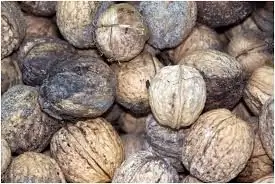
A too humid environment can cause mold to grow on nuts
The shelf life of nuts in raw, unpeeled form will depend on the species. Below, using the example of the table, we will consider the shelf life and optimal conditions specifically for each species.
Table: storage conditions for inshell nuts
| Nut type | Storage options | |
| Period | Temperature, ° C | |
| Greek, Manchu, black, pecan | 1 year | 10-14 |
| Hazelnut, hazel | 3-4 years | 3-12 |
| Cedar | up to 6 months | before 18 |
| Brazilian | 2 years | up to 20 |
| Pistachios | 6-12 months | 4-20 |
| Peanut | 12 months | before 18 |
| Almond | more than 1 year | before 18 |
| Chufa | 2-3 | up to 20 |
| Chestnut | 1-3 months | 10-15 |
| Muscat | up to 9 years | twenty |
| Coconut | 1-3 months | 10-15 |
Coconut, unlike other nuts, is not stored at less than 50% moisture. The fact is that there is liquid inside the coconut. The lower the humidity, the faster it dries, the juiciness and taste of the pulp are lost.
Chestnuts go bad quickly, even in the refrigerator. At room temperature, the fruits dry up and lose their qualities, and in the refrigerator they grow moldy. The best way to store chestnuts is in the basement, buried in the sand. So they can be stored for up to 6 months.
Nuts are stored not only in the refrigerator, but also in the freezer, which extends their shelf life at times. Most often, cleaned kernels are used, which deteriorate faster and take up less space.
How are peeled fruits stored?
The storage area should be cool, dark and well-ventilated. Unshell kernels are not stored open, as they quickly absorb odors and begin to deteriorate. They are poured into glass or metal containers with a lid. It is highly undesirable to use plastic bags - nuts rot there. But if you are going to send them to the freezer, then there will be no problem.
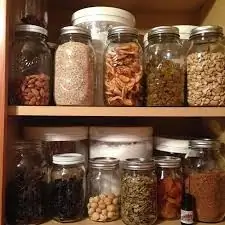
Nuts are best stored in glass jars or containers
Peeled nuts are also difficult to store because they often contain insect larvae, such as food moths. By buying them, you run the risk of purchasing an infected product. If you are sure of the quality of the fruits, feel free to place them in an airtight container. If not, first bake in the oven at 200 ° C for several minutes or in a dry, heavy-bottomed skillet.
Table: shelf life of nuts without shell
| Nut type | Storage | ||
|
Cool dark place |
Fridge | Freezer | |
| Greek, Manchu, black, pecan | 3-4 weeks | 6 months | more than a year |
| Hazelnut, hazel | 2-4 weeks | 3 months | 6 months |
| Cashew nuts | 1 month | 2-3 months | more than 6 months |
| Brazilian | 1 year | 1-12 months * | 2 years |
| Pistachios | 3 months | 9 months | 12 months |
| Cedar | 1 week | 2-3 weeks | 6-8 months |
| Peanut | 6-9 months | 4-6 months | 9 months |
| Almond | 3 months | 12 months | more than a year |
| Coconut | - | 2 days | - |
The preservation of Brazil nuts depends on the packaging. If stored in a plastic bag on one of the refrigerator shelves, the shelf life is maximum 1 month. They can be stored in an airtight container for over a year. Chopped nuts are stored for no more than 3 weeks.
Unshell coconut quickly becomes tasteless and sluggish. It consists of 46% water, so it can ferment in two days. Coconut water is stored in a refrigerator in a tightly closed glass jar for no more than a week, in a freezer - up to 3 months. If the pulp is chopped and dried, then it can be stored for a year.
Peeled pistachios begin to lose their taste after 3 months, while there is no difference where they are stored: in a cabinet, refrigerator or freezer.
As for chestnuts, they are rarely stored in a raw, peeled state. This is because raw chestnuts are difficult to peel. This will take a lot of effort and patience. After peeling, the chestnuts are placed in a plastic zip bag or container for storing food and sent to the refrigerator for several months, or better in the freezer.
The problem with storing peeled nuts is also that you never know for sure when they were peeled. There is only one way out: rely on your own instinct and smell.
As for the salty and sweet nuts, they are eaten immediately after the package is opened.
Nuts that don't require peeling
Not all types of nuts require peeling. Chufa or earthen almonds, as it is also called, are not peeled at all. In fact, this is not a nut, but the tubers of a herbaceous plant - edible cyperus. After drying, the fruits wrinkle strongly, it is almost impossible to peel such nuts. Before storage, chufu must be washed and dried, after which it is stored in fabric bags in the basement or in room conditions.
Cashews are sold only peeled. The fact is that it is covered with a very poisonous shell containing the poison of cardol. It is not recommended to peel nuts by hand, as this substance can cause burns if it comes into contact with the skin. Therefore, cashew nuts are peeled with the help of special equipment, and they go on sale without the shell.
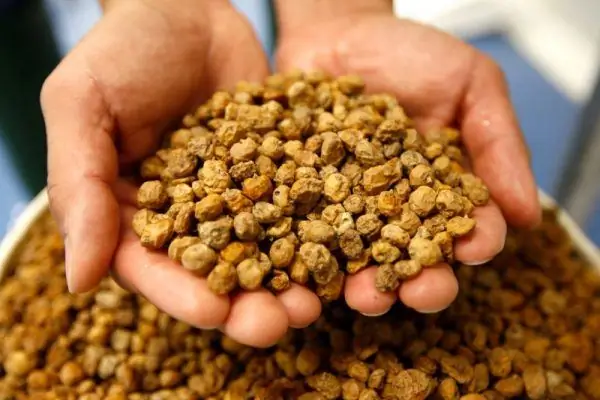
Chufa is probably the only nut that does not require peeling
How to store crushed and grated nuts
It is not recommended to store nuts for a long time in a crushed state. Many housewives prefer to harvest large quantities of peeled and crushed kernels for use in baking and cooking. But in this form, they quickly deteriorate and the use of such a product can be harmful to health. Chopped walnuts are stored for 1-3 weeks, in contrast to peeled butterfly kernels. Almond petals begin to lose their qualities after a few days. Grated kernels are not stored at all. As an exception, only coconut or nutmeg, which is stored for up to a year in a closed bag or jar.
General rules of storage at home
- Nuts are stored only in closed containers - glass, metal, clay.
- It is undesirable to use plastic dishes - there the kernels deteriorate faster.
- Large unpeeled nuts are usually poured into cloth bags, small ones - in containers or jars.
- If there are a lot of fruits, then they can be poured directly onto the floor in a dry and dark room, covering the floor with oilcloth or a blanket.
- This product keeps well in the freezer.
- It is undesirable to mix different varieties, since each of them has its own shelf life.
- You cannot mix kernels of the same type, but purchased at different times.
- If mold, musty odor, and insect larvae are found, the fruits are thrown away.
- Nuts are stored much longer in vacuum bags.
How to peel nuts from shells and husks
Many people prefer to buy already peeled kernels, as they do not want to spend their energy and time cleaning them. In some nuts, the shell is so hard and so tightly adhered to the core that it is almost impossible to get the whole core without skills and adaptations. The hardest to peel are Manchu, Black, Hazelnuts, and Chestnuts. It is not easy to peel pine nuts because they are very small and their shells are hard. Peanuts are easiest to peel. This does not require any tools, since it is easy to do it with your hands.
Nuts are cleaned using special nut crackers, pliers, knife, garlic press, rolling pin, hammer, etc.
In addition to the shell, the kernels are covered with husks, which often have a bitter taste and spoil the taste of the kernels in general. It is also not easy to get rid of it.
Hazelnuts and hazelnuts
The difficulty in removing hazelnut and hazelnut kernels is that they are small, and their shells are smooth and rather strong. It is very difficult to break such tails with a hammer, and you also risk crippling your fingers. It is better to chop hazelnuts in the following ways:
-
Using a garlic press:
- the nut is placed in a garlic press;
- press, gradually increase the pressure;
- when the shell cracks, the contents are taken out;
-
the core is separated from the shell.

How to chop hazelnuts with a garlic press Hazelnuts or hazel are "crushed" like garlic
-
Using ordinary pliers:
- with one hand holding pliers and the other holding a nut;
- the nut is clamped between the arcuate sections;
-
crush until the shell cracks.

How to prick hazelnuts with pliers The core remains intact thanks to the rounded sections of the pliers!
-
Using a cloth bag and rolling pin:
- nuts are poured into a bag;
- leveled in one layer;
- take a rolling pin and "roll it out" using force;
- if some nuts do not give up, then you can knock on them with the same rolling pin;
- the result is that both the kernels and the shells are in the bag, and not in all corners of the room.
- Using a cloth bag and a hammer. The method is similar to the previous one, only in this case the nuts are knocked on the side of the hammer.
A huge advantage of the first method is that the shell does not scatter throughout the room. But if you want to get a whole kernel, then you have to manage for a while until you learn to "crush" the nuts with the necessary force, without turning the core into crumb. You should also get a high-quality garlic press, since cheap Chinese ones will break after the first tough nuts.
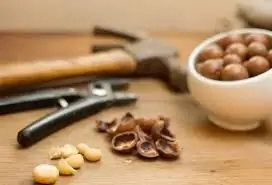
Hazelnuts are difficult to peel due to their small size and sturdy shell
You can make a device for splitting hazelnuts and hazel with your own hands. You will need two wooden blocks 25 cm long, one furniture card hinge for four self-tapping screws and, in fact, self-tapping screws.
How to do:
- Shallow round-shaped depressions are made symmetrically on both bars. The depressions can be of different sizes, since not all nuts are the same.
- Two bars are connected to each other using a loop and self-tapping screws. That's it, the self-made nutcracker is ready!
- Start cleaning: on one bar, place the nut in a well of the appropriate size and press down with the other. The kernels remain intact and the shell does not fly apart.
Video: how to make a device for cleaning hazelnuts and hazel with your own hands
Often the shell is so hard that it is very difficult to break it. In such cases, the nuts are poured onto a baking sheet in one layer and sent to simmer in the oven for 10 minutes at a temperature of 50-60 ° C. After that, the shell becomes more pliable and it is much easier to get the core.
After release from the shell, the hazelnuts are sent for storage or used immediately. Many people prefer to peel nuts from bitter husks that adhere tightly to the kernels. First, you need to fry the nuts in a hot pan for 5 minutes, stirring actively. Peeled hazelnuts can also be roasted in the oven at 180 ° C. After that, the nuts are allowed to cool, and then poured into a bag and "rolled" between the palms or on the table. Due to the friction of the nuts, the husks will fall off and, which is important, will remain inside the bag. You can place the toasted kernels between two tea towels and do the same.
Pistachios
Probably there is no person who does not like pistachios. They are delicious and nutritious, besides, nature itself decided to take care of the ease of cleaning. A distinctive feature of these green nuts is that the hard, smooth shell opens during the ripening of the fruit. They clean pistachios easily and quickly with your hands, but in order not to break your nails and make this process even easier, you can use half of the shell.
How pistachios are peeled:
- An unpeeled nut is taken in one hand, in the other - one piece of shell.
-
Insert the shell into the gap between two pistachio wedges and turn.

How pistachios are peeled Even large quantities of pistachios can be peeled with ease in this way!
- The nutlet completely "opened", but the nails remained intact!
This method allows you to easily open weakly opened nuts. You can also use a knife, but this is not so convenient and there is a risk of injury. As for the unopened pistachios, you can open them with pliers or a garlic press.
Video: how easy it is to peel pistachios
If you want to peel pistachio kernels from the husk, then it's easy to do:
- pour the nuts into a deep bowl;
- pour boiling water over and leave for 2 minutes;
- pour off boiling water and pour cold water;
- after a few minutes, drain the water and peel the nuts with your fingers.
Brazil nuts
Peeling Brazil nuts is difficult. They are small in size, and their shell is hard, like a stone. Alas, ordinary devices are indispensable here, therefore, the Brazilian nut most often goes on sale in a peeled form.
There are several effective ways to get rid of the shell:
-
Freezing method:
- put kernels in a package;
- send to the freezer for several hours;
- pour water into a saucepan and put on fire;
- get nuts from the freezer and throw into boiling water;
- take it out after a few seconds and let cool;
- prick with a regular nutcracker or pliers.
- Cooking method. The kernels are boiled in a saucepan with water for 1 minute, then the water is drained and poured cold to cool the nuts. When the fruits have cooled, they can be easily peeled in any way.
-
In the oven:
- preheat the oven to 180 ° C;
- Pour nuts on a baking sheet and send to a hot oven;
- get it in 15 minutes;
- let cool;
-
start cleaning.

Roasting nuts in the oven Brazil nuts can be roasted in the oven and the shells become less hard.
The fact is that an extremely high or negative temperature makes the hard shell of the Brazil nut softer and more pliable for splitting, and most of the husk that covers the kernel easily leaves with the shell.
Edible chestnuts
Unlike other species, they do not need to be pricked or hit with a hammer. As a rule, chestnuts are peeled with a knife. It is easier to do this after heat treatment.
Methods for cleaning chestnuts:
-
Frying in a pan:
- put a dry frying pan on fire;
-
make a cruciform incision with a knife on each chestnut;

How to make an incision in chestnuts at home Usually a cruciform incision is made
- place in a dry hot frying pan;
- fry covered for 10 minutes, stirring actively;
- remove from the fire when all the chestnuts "open";
- let the fruit cool;
- peel;
- to do this easily and quickly: just squeeze the chestnut with your hands, the peel will burst and easily come off;
-
peel the brown film off the chestnut with a knife.

How chestnuts are fried in a pan After frying, the hard skin can be removed even with your fingers!
-
In the oven:
- preheat the oven to 200 ° C;
- Pour chestnuts on a baking sheet and send to the oven;
- take out, allow to cool;
-
clean.

How to roast chestnuts in the oven Chestnuts are pre-baked in the oven to facilitate cleaning.
-
In the microwave:
- pour water into a glass container with a lid;
- put fruits in water;
- put the container in the microwave;
- turn on the standard mode and bake for half an hour;
-
chestnuts burst and then easily removed from the shell.

How you can not bake chestnuts in the microwave This is what happens if you bake chestnuts without making cuts or covering them with a lid!
-
Cooking:
- put a pot of water on the fire;
- cut the chestnuts in a circle with a sharp knife;
-
when the water boils, throw the fruits there;

How to cook chestnuts at home Chestnuts are thrown into water after boiling
- boil for 10 minutes;
-
remove from heat, put in a colander and drain;

How to peel chestnuts You may not need to peel the chestnuts before cooking, but it will be more difficult to peel them.
- let the chestnuts cool;
-
clean.

How to peel chestnuts To make it easier to hold in your hands, you can use a kitchen napkin
- In the freezer: Follow the instructions for Brazil nuts.
Chestnuts peeled in this way are quite ready to eat. If desired, you can prepare a delicious and nutritious dish with them according to one of the many recipes.
Video: how to peel raw chestnuts
Nutmeg
Unlike walnuts, hazelnuts, cashews, etc., nutmeg is not stored in large quantities. The fact is that this is a spice and only a little bit of it is needed for cooking, otherwise a bitter taste will appear. It is also worth noting that in large quantities it can cause poisoning and even has a narcotic effect. What heals in small doses can kill in large ones.
Usually, nutmeg is bought in a ground state, but it does not have such a rich taste and smell as freshly grated. Less commonly, you can find unpeeled walnuts on sale. In the shell, it can be stored for up to 9 years, which is a kind of record.
Removing the shell from this spicy nut is as easy as shelling pears: you just need to press down on the nut with a knife, cutting board or plate and roll it around the table. After such simple manipulations, the shell will crack and can be easily removed. In this case, the kernel will not suffer.
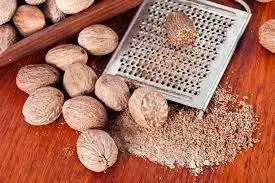
Tinder nutmeg on a fine grater or use a special mill
Manchurian and black nuts, pecan
These three, at first glance, different nuts belong to the same type of tree - walnut. The walnut is also included in this species. Their common feature is that the shell-free core is shaped like a human brain. Unlike walnut, Manchu and black have a rather hard and thick shell. It is quite difficult to get the core and therefore many bypass them. But in vain, because in their nutritional value and benefits for the body, they surpass their relative - walnut.
How to crack a Manchu nut
It is not easy to do this in the usual ways, because the shell is too hard and the kernel is tightly attached to it. Using a hammer, tongs, or nutcracker will not work well and you will end up with crumb instead of a kernel.
There is a good way to remove the Manchurian walnut kernels practically unharmed. You will need a hammer and a tall piece of wood approximately 30 cm in diameter and 70 cm in height. It is best to use birch or other types of wood with similar hardness.
How to clean:
- In the middle, at the place of the cut, make a small depression.
- The nut is inserted with the sharp part into the recess, holding it in an upright position with one hand.
- They take a hammer in the other hand and strike the back of the fruit, as if "hammering" it into the log.
- After a few blows, the shell should crack, after which it will be quite easy to get the core out.
- Internal baffles will also break, making cleaning much easier.
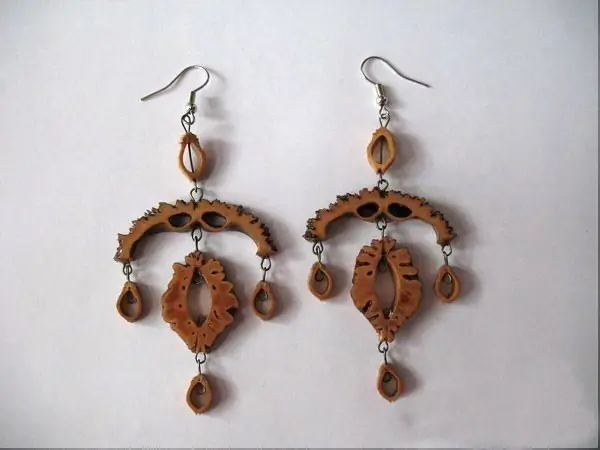
These are wonderful earrings that can be made from Manchurian walnut shells!
How to crack a black nut
He is pricked with a nutcracker and a hammer. To facilitate cleaning, the kernels can be boiled for a few seconds, like chestnuts.
It is also easy to peel nuts from a brown film. To do this, you need utensils for the microwave oven, water and, in fact, a microwave oven. The kernels can also be baked in the oven, but the uneven surface makes the skin difficult to remove completely when dry.
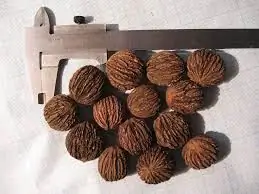
Black walnut can be broken with a hammer or cracked with a special tool
Pecan
In our latitudes, this species is rarely found on sale, although in its homeland - North America - it is one of the favorite delicacies. Pecans differ from their other relatives by their smooth shell and smaller size.
Pecan is pricked using special nut crackers, pliers, garlic press. Can also be smashed with a small hammer. The methods to make cleaning easier are the same as for the black walnut.
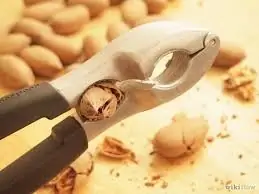
Pecans can be chopped with a special nutcracker
How to peel coconut
Sometimes you want to pamper yourself with exotic and mentally go to distant islands, where summer, sun, palm trees and white sand. A coconut will help you to feel like a hero of an advertisement for a Bounty bar. But how difficult it is to get to its contents!
Cracking a coconut seems difficult at first glance. You will need a sharp knife with a narrow blade or an ordinary screwdriver, a hammer and a little of your time.
First, a liquid is "extracted" from the inside, which is often called coconut milk. They do it as follows:
-
First, find the "eyes" on the nut. There are only three of them - two small and one slightly larger.

What the "eyes" look like on a coconut The so-called "eyes" are located on the side where the coco was once attached to the palm tree
-
Use a knife or a screwdriver to punch a hole in the largest "eye" (it is softer than the others).

How to make a hole in a coconut The hole can be made with a sharp knife
-
Then turn the nut over the container and pour out the liquid.

How to pour liquid from coconut Coconut milk will flow out easily if you make a hole in the large "eye"

You can drink coconut milk straight from the nut through a straw!
How to split a coconut in two:
- Take a coconut in one hand and a hammer in the other.
-
Begin tapping the nut in a circle (draw a line down the middle of the coconut with your knife).

How to split a coconut Use a hammer to crack a coconut.
- Knock until cracks appear.
- Divide the nut in half with your hands.
-
Remove the pulp with a knife.

How to get coconut pulp The pulp is separated with a knife piece by piece
You can use a large kitchen knife instead of a hammer. The blows are applied with the blunt side of the blade. Then they take out the pulp with the same knife, making cuts in it and moving it away from the hard shell with a blade.
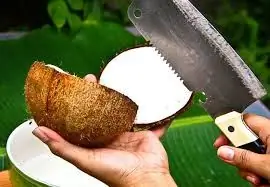
A coconut can be split in two with a kitchen knife
Video: how to easily break a coconut
How peanuts, almonds and pine nuts are peeled, including from the husk
Peanuts are easy to peel after roasting in the oven for 3-5 minutes at 180 ° C. After that, the nuts are placed in a bag and "rolled" on the table by hand or rolling pin until the husk is completely destroyed. Peeled and dried fruits are poured into a sieve and rubbed by hand until the crushed brown film spills out through the holes. If peanuts were peeled raw, then the nuts are poured with water for several hours and freed from the film with your fingers.
Almonds and pine nuts are placed in boiling water for 1-2 minutes and then peeled in the same way as peanuts.
Knowing how to select, peel and store nuts will help you enjoy their flavor all year round!
Recommended:
How To Store Pine Nuts At Home, Including Peeled Nuts
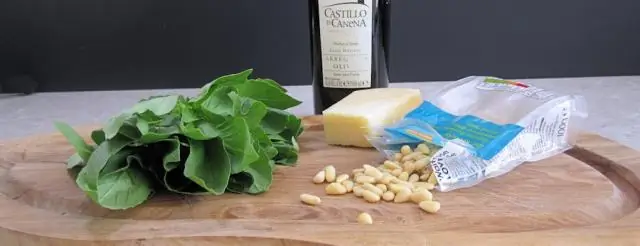
How to store different types of pine nuts correctly. How to choose them and how to keep all the benefits
How To Peel Or Shell Almonds And Store Them Properly At Home

Methods for cleaning almonds from shells and peels, storage rules at home. The nuances of storing peeled and unpeeled nuts
How To Peel Pine Nuts At Home - Different Ways To Peel These Nuts From The Shell + Photos And Videos
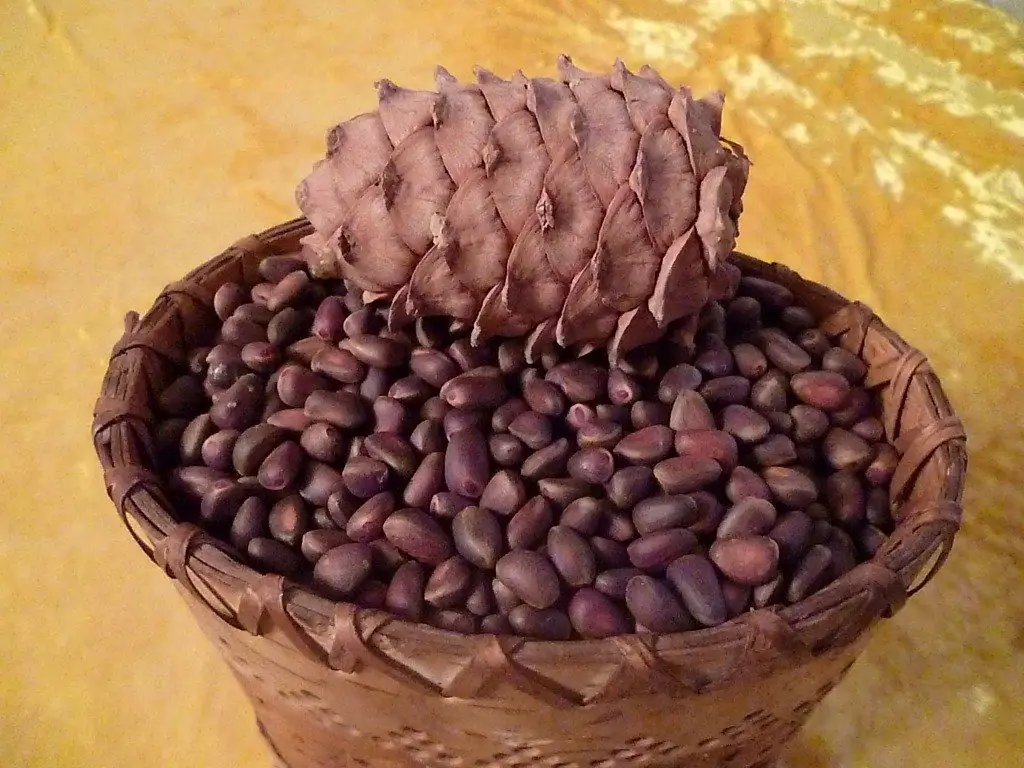
Removing the shell from nuts is a serious task. How to clean pine nuts at home with a minimum of effort
How To Peel An Avocado For Different Purposes, How To Quickly Peel Off, How To Remove A Pit: Effective And Easy Ways To Peel A Fruit
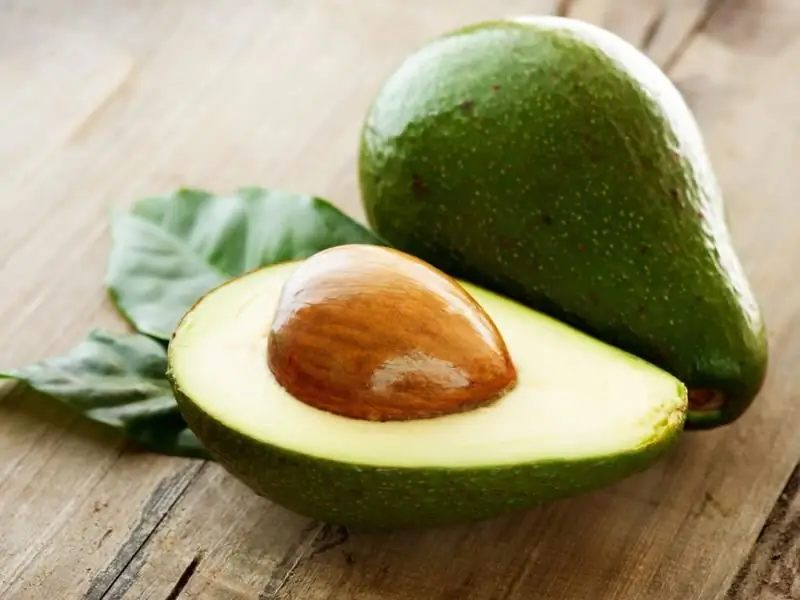
Methods for peeling avocados. How to cut an avocado into cubes, slices. How to peel unripe fruit
How To Properly Wash Makeup Brushes, How Can You Wash Cosmetic Sponges (including For Foundation), How Often You Need To Do It

How often and correctly you should wash your makeup brushes and sponges. Home and professional cleaning tools for cosmetic tools. Instructions. Video
